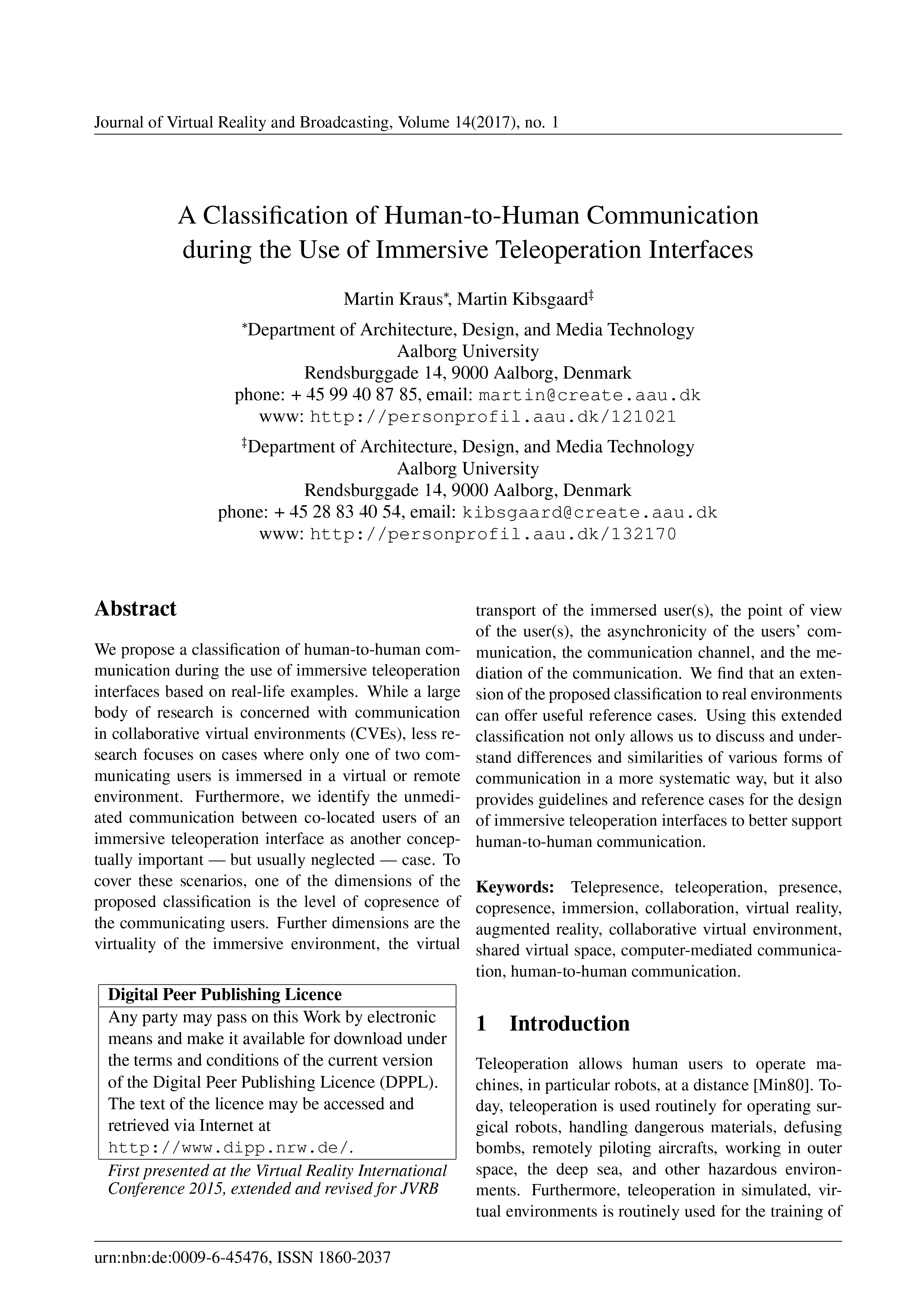A Classification of Human-to-Human Communication during the Use of Immersive Teleoperation Interfaces
DOI:
https://doi.org/10.20385/1860-2037/14.2017.1Keywords:
Telepresence, augmented reality, collaboration, collaborative virtual environment, computer-mediated communication, copresence, human-to-human communication, immersion, presence, shared virtual space, teleoperation, virtual realityAbstract
We propose a classification of human-to-human communication during the use of immersive teleoperation interfaces based on real-life examples. While a large body of research is concerned with communication in collaborative virtual environments (CVEs), less research focuses on cases where only one of two communicating users is immersed in a virtual or remote environment. Furthermore, we identify the unmediated communication between co-located users of an immersive teleoperation interface as another conceptually important — but usually neglected — case. To cover these scenarios, one of the dimensions of the proposed classification is the level of copresence of the communicating users. Further dimensions are the virtuality of the immersive environment, the virtual transport of the immersed user(s), the point of view of the user(s), the asynchronicity of the users’ communication, the communication channel, and the mediation of the communication. We find that an extension of the proposed classification to real environments can offer useful reference cases. Using this extended classification not only allows us to discuss and understand differences and similarities of various forms of communication in a more systematic way, but it also provides guidelines and reference cases for the design of immersive teleoperation interfaces to better support human-to-human communication.
Published
2018-06-06
Issue
Section
VRIC 2015





